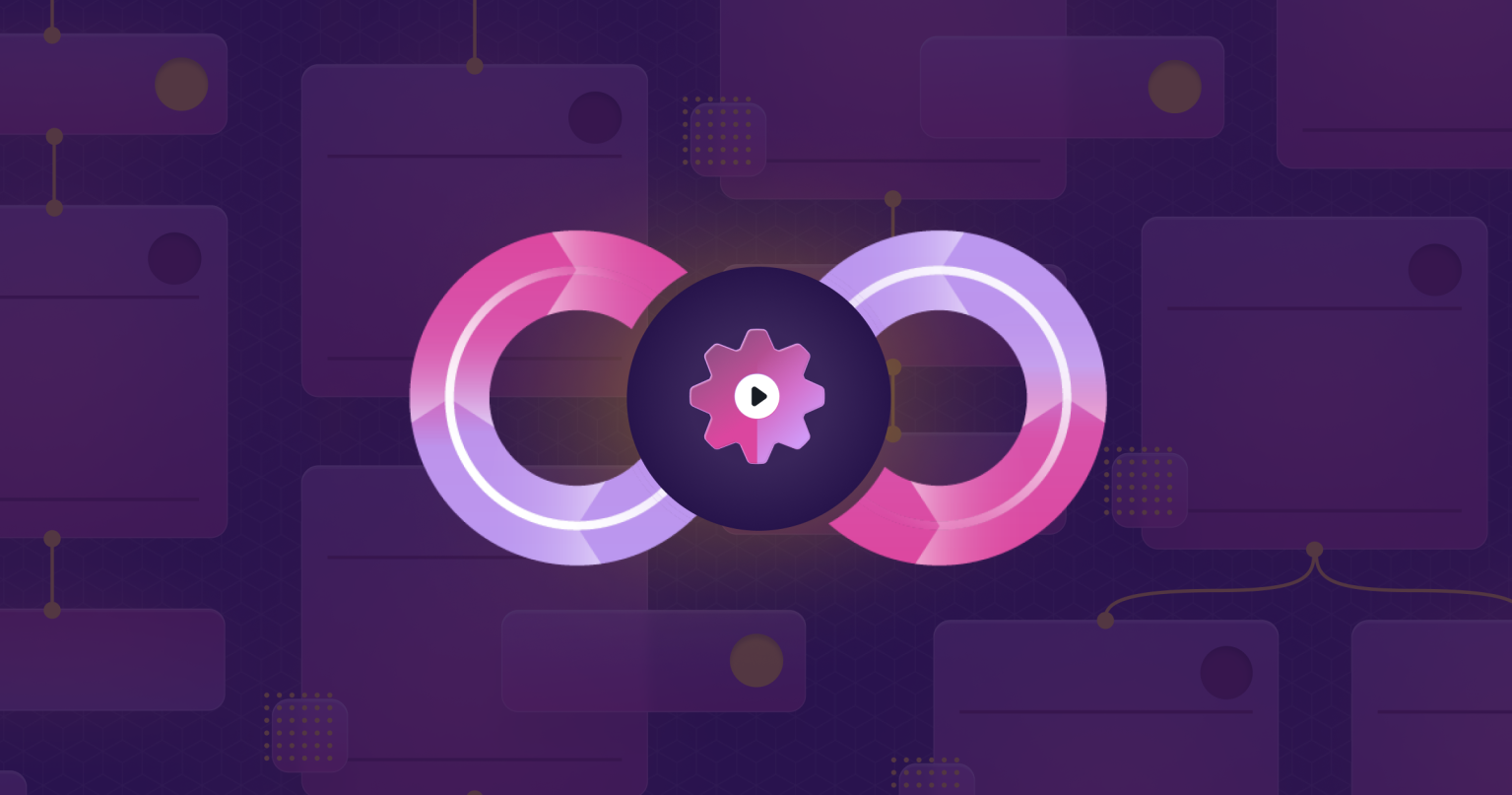The evolving role of operations in DevOps

To better understand how DevOps changes the responsibilities of operations
teams, it will help to recap the traditional, pre-DevOps role of operations.
Let’s take a look at a typical organization’s software lifecycle: before
DevOps, developers package an application with documentation, and then ship it
to a QA team. The QA teams install and test the application, and then hand off
to production operations teams. The operations teams are then responsible for
deploying and managing the software with little-to-no direct interaction with
the development teams. These dev-to-ops handoffs are typically one-way, often
limited to a few scheduled times in an application’s release cycle. Once in
production, the operations team is then responsible for managing the service’s
stability and uptime, as well as the infrastructure that hosts the code. If
there are bugs in the code, the virtual assembly line of dev-to-qa-to-prod is
revisited with a patch, with each team waiting on the other for next steps.
This model typically requires pre-existing infrastructure that needs to be
maintained, and comes with significant overhead. While many businesses
continue to remain competitive with this model, the faster, more collaborative
way of bridging the gap between development and operations is finding wide
adoption in the form of DevOps.
Monitoring Microservices the Right Way
The common practice by StatsD and other traditional solutions was to collect
metrics in push mode, which required explicitly configuring each component and
third-party tool with the metrics collector destination. With the many
frameworks and languages involved in modern systems it has become challenging to
maintain this explicit push-mode sending of metrics. Adding Kubernetes to the
mix increased the complexity even further. Teams were looking to offload the
work of collecting metrics. This was a distinct strongpoint of Prometheus, which
offered a pull-mode scraping, together with service discovery of the components
("targets" in Prometheus terms). In particular, Prometheus shined with its
native scraping from Kubernetes, and as Kubernetes’s demand skyrocketed so did
Prometheus. As the popularity of Prometheus grew, many open source projects
added support for the Prometheus Metrics Exporter format, which has made metrics
scraping with Prometheus even more seamless. Today you can find Prometheus
exporters for many common systems including popular databases, messaging
systems, web servers, or hardware components.
Will Blockchain Replace Clearinghouses? A Case Of DVP Post-Trade Settlement

Blockchain technology can improve settlement processes substantially. First,
using a blockchain makes it possible to decrease counterparty risk as it
enables a trustless settlement process that is similar to DVP settlement in a
way that the delivery of an asset is directly linked to the instantaneous
payment for the asset. Therefore, atomic swaps enable direct “barter”
operations when one tokenized asset is directly exchanged for another
tokenized asset (delivery versus delivery). Here, “directly exchanged” means
that the technology guarantees that both transfers have to happen. It is
technologically not possible that only one transfer is executed if the other
transfer is interrupted for whatever reason. Besides, if a blockchain is used
for settlement, a third party intermediary that helps to facilitate settlement
in the case of a conventional, not DLT-based DVP is no longer necessary. This
implies peer-to-peer settlement that leads to substantial cost savings for the
settlement. In addition, cross-chain atomic swaps cover more complex cases
such as trustless settlement among more than two parties.
Cloud native security: A maturing and expanding arena

Along with the usual array of preventative controls that are deployed as part
of a cloud native platform, companies need to focus on detection and response
to breaches. It’s important to note that the usual toolsets that are put in
place will need to be supplemented by cloud native tools that can provide
targeted visibility into container-based workflows. Projects like Falco, which
can integrate with container workloads at a low level, are an important part
of this. Additionally, companies should make sure to properly use the
facilities that Kubernetes provides. For example, Kubernetes audit logging is
rarely enabled by default, but it’s an important control for any production
cluster. A key takeaway for container security deployments is the importance
of getting security controls in place before workloads are placed into
production. Ensuring that developers are making use of Kubernetes features
like Security Contexts to harden their deployments will make the deployment of
mandatory controls much easier. Also ensuring that a “least privilege” initial
approach is taken to network traffic in a cluster can help avoid the “hard
shell, soft inside” approach to security that allows attackers to easily
expand their access after an initial compromise has occurred.
Cloud computing in the real world: The challenges and opportunities of multicloud

In an ideal world, application workloads -- whatever their heritage -- should
be able to move seamlessly between, or be shared among, cloud service
providers (CSPs), alighting wherever the optimal combination of performance,
functionality, cost, security, compliance, availability, resilience, and so
on, is to be found -- while avoiding the dreaded 'vendor lock-in'. "Businesses
taking a multicloud approach can cherry-pick the solutions that best meet
their business needs as soon as they become available, rather than having to
wait for one vendor to catch up," John Abel, technical director, office of the
CTO, Google Cloud, told ZDNet. "Avoiding vendor lock in, increased agility,
more efficient costs and the promise of each provider's best solutions are all
too great to ignore." That's certainly the view taken by many respondents to
the survey underpinning the 2020 State of Multicloud report from application
resource management company Turbonomic. ... "Bottom-line, cultural change is a
prerequisite for managing the complexity of today's hybrid and multicloud
environments. Teams must operate faster, dynamically adapting to shifting
market trends to stay competitive.
An Architect's guide to APIs: REST, GraphQL, and gRPC

The benefit of taking an API-based approach to application architecture design
is that it allows a wide variety of physical client devices and application
types to interact with the given application. One API can be used not only for
PC-based computing but also for cellphones and IoT devices. Communication is
not limited to interactions between humans and applications. With the rise of
machine learning and artificial intelligence, service-to-service interaction
facilitated by APIs will emerge as the Internet's principal activity. APIs
bring a new dimension to architectural design. However, while network
communication and data structures have become more conventional over time,
there is still variety among API formats. There is no "one ring to rule them
all." Instead, there are many API formats, with the most popular being REST,
GraphQL, and gRPC. Thus a reasonable question to ask is, as an Enterprise
Architect, how do I pick the best API format to meet the need at hand? The
answer is that it's a matter of understanding the benefits and limitations of
the given format.
Unlock the Power of Omnichannel Retail at the Edge
The Edge exists wherever the digital world and physical world intersect, and data is securely collected, generated, and processed to create new value. According to Gartner, by 2025, 75 percent6 of data will be processed at the Edge. For retailers, Edge technology means real-time data collection, analytics and automated responses where they matter most — on the shop floor, be that physical or virtual. And for today’s retailers, it’s what happens when Edge computing is combined with Computer Vision and AI that is most powerful and exciting, as it creates the many opportunities of omnichannel shopping. With Computer Vision, retailers enter a world of powerful sensor-enabled cameras that can see much more than the human eye. Combined with Edge analytics and AI, Computer Vision can enable retailers to monitor, interpret, and act in real-time across all areas of the retail environment. This type of vision has obvious implications for security, but for retailers it also opens up huge possibilities in understanding shopping behavior and implementing rapid responses. For example, understanding how customers flow through the store, and at what times of the day, can allow the retailer to put more important items directly in their paths to be more visible.Hacking Group Used Crypto Miners as Distraction Technique

The use of the monero miners helped the hacking group establish persistence
within targeted networks and enabled them to deploy other spy tools and
malware without raising suspicion. That's because cryptocurrency miners are
usually low-level security priorities for most organizations, according to
Microsoft. "Cryptocurrency miners are typically associated with cybercriminal
operations, not sophisticated nation-state actor activity," the Microsoft
report notes. "They are not the most sophisticated type of threats, which also
means that they are not among the most critical security issues that defenders
address with urgency. Recent campaigns from the nation-state actor Bismuth
take advantage of the low-priority alerts coin miners cause to try and fly
under the radar and establish persistence." The Microsoft report also notes:
"While this actor's operational goals remained the same - establish continuous
monitoring and espionage, exfiltrating useful information as it surfaced -
their deployment of coin miners in their recent campaigns provided another way
for the attackers to monetize compromised networks."
Cypress vs. Selenium: Compare test automation frameworks

Selenium suits applications that don't have many complex front-end components.
Selenium's support for multiple languages makes it a good choice as the test
automation framework for development projects that aren't in JavaScript.
Selenium is open source, has ample documentation and is well supported by many
other open source tools. Also, when a project calls for behavior-driven
development (BDD), organizations find Selenium fits the approach well, as many
libraries, like Cucumber or Capybara, make writing tests within BDD structured
and implementable. Cypress is a great tool to automate JavaScript application
testing. And that's a large group, as JavaScript is the language of choice for
many modern web applications. Cypress integrates well with the client side and
asynchronous design of these applications, as it natively ties into the web
browser. Thus, test scripts run much quicker and more reliably than they would
for the same application tested with Selenium for automation. Cypress might be
better suited for a testing team with programming experience, as JavaScript is
a complex single-threaded, non-blocking, asynchronous, concurrent language.
The Complexity of Product Management and Product Ownership
An issue for organisational leaders considering how to design for product flow
is that when someone says product ownership or product management we are
immediately uncertain which of many possible definitions the person is referring
to. This level of ambiguity is a constant struggle in the software world. Agile,
DevOps, and Digital are all now terms which are the subject of confusion and
passionate neverending debates. Product ownership/management has now joined
them. Kent Beck described a similar issue in software teams when everyone has
slightly different concepts in their minds when describing system components. He
called this the problem of metaphor and prescribed it as a key practice in
eXtreme programming. We need to take this practice of System Metaphor to our
wider discussions as product delivery groups if we are going to resolve bigger
issues. To help consider some of the Metaphor surrounding the product owner
function I highly recommend the blog by Roman Pilcher (an author on product
management) He does a good job of creating metaphors for the key variations in
product management roles.
Quote for the day:
"Real generosity towards the future lies in giving all to the present." -- Camus
No comments:
Post a Comment